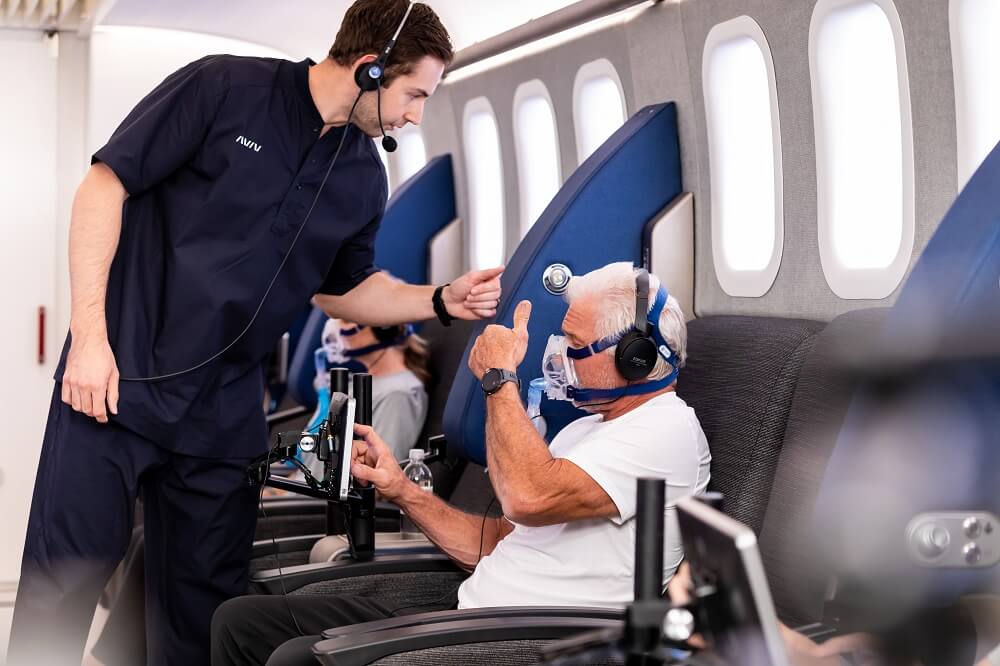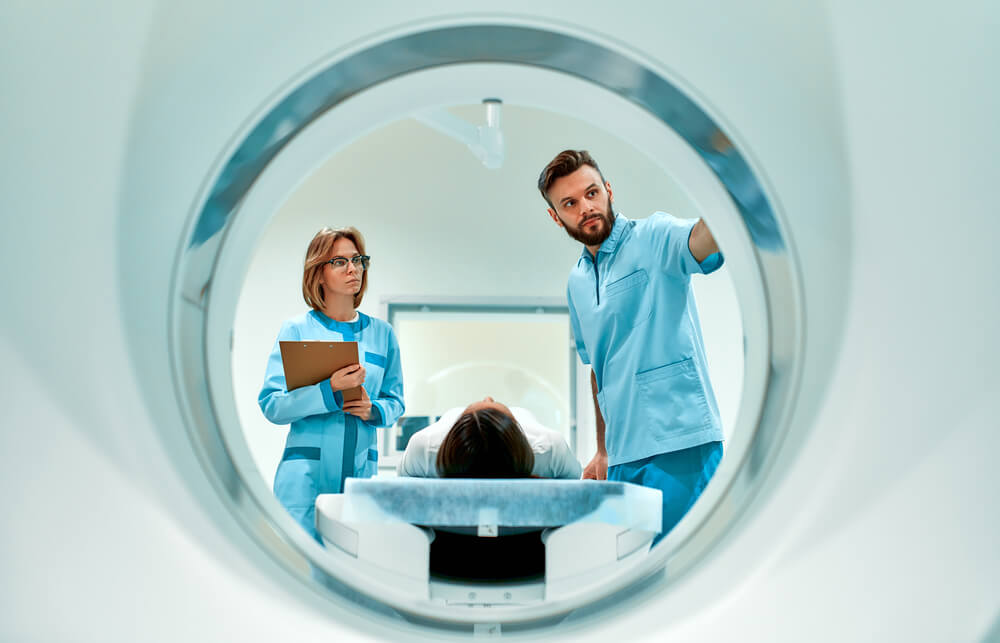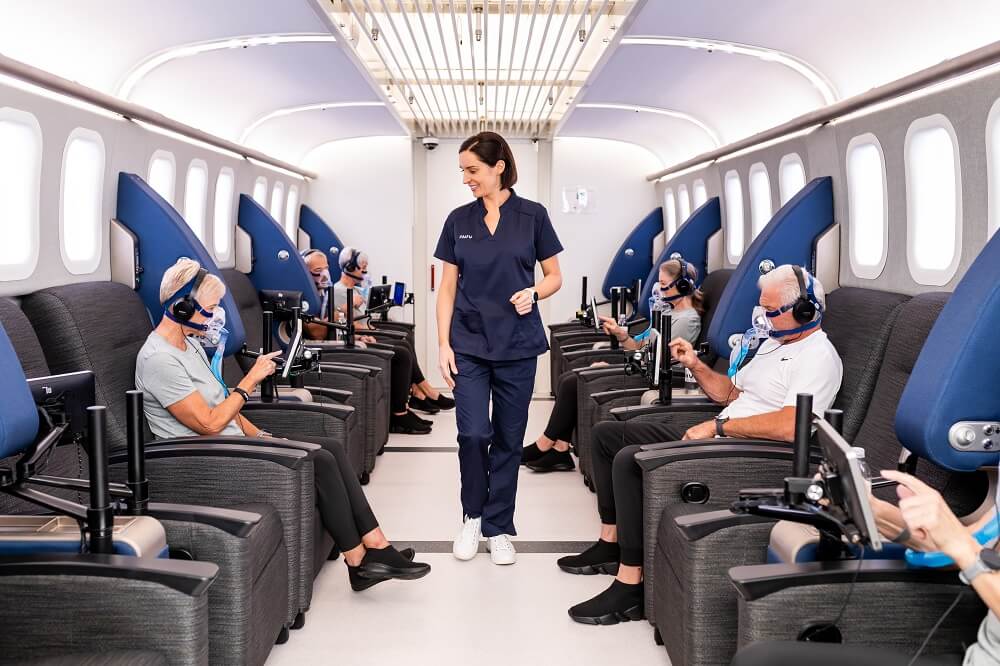
Innovative Anoxic Brain Damage Care: The Power of Hyperbaric Oxygen Therapy


NOTE: Anoxic brain damage is a medical emergency that can result in tragic outcomes, including coma or death, if not treated promptly.
Every year, thousands of individuals face the difficult consequences of oxygen deprivation to the brain, leading to what is known as anoxic brain damage (also called cerebral hypoxia). This challenging condition results from numerous circumstances, including cardiac arrest, carbon monoxide (CO) poisoning, and disruptions in breathing caused by incidents like choking or smoke inhalation. The effects can be profound, but there is reason for optimism.
Cardiac events are a primary cause of oxygen deprivation. According to the CDC, “about 805,0000 people in the United States have a heart attack [each year].” While we often focus on the heart’s recovery following cardiac arrest, it can have an equal impact on the brain. Researchers found “cognitive impairments after OHCA [out-of-hospital cardiac arrest] are common and affect up to 50% [of patients].”
These impairments often manifest through anoxic brain injury symptoms such as diminished visual perception, cognition, expression, and more. These changes can feel overwhelming regardless of the cause—whether a heart attack, a non-fatal drowning, or another traumatic brain injury. The effects on the brain—and impact on one’s quality of life—can be similar, even when the initial causes differ.
Fortunately, scientific evidence offers hope for anoxic brain injury treatment. At Aviv Clinics, we’re committed to exploring these cutting-edge resources and tools to unlock this potential and support the journey to recovery. Keep reading to learn more.

What Is Anoxic Brain Damage?
Anoxic brain damage occurs when there is a lack of oxygen to the brain. Science shows that “after approximately four minutes of oxygen deprivation,” brain cells begin to die, potentially leading to severe anoxic brain injury and its profound effects.
Here’s why anoxic brain injury occurs:
- Blood carries oxygen to the brain for energy.
- Certain conditions cause the blood flow to slow or get blocked.
- Lack of blood flow starves the brain of oxygen, leading to cell damage and death.
To perform its vital functions, the brain requires “20% of the body’s total oxygen supply even though it only makes up for 2% of the body weight.” Understanding these mechanisms and the importance of oxygen in the brain helps illustrate the gravity of scenarios that can result in anoxic brain injury.
Causes of Anoxic Brain Damage
Anoxic brain injuries result from various situations that disrupt oxygen to the brain, such as:
- Cardiac arrest
- Blood clot
- Stroke
- Non-fatal drowning
- Choking or strangulation
- Severe asthma attack
- Severe blood loss
- Exposure to toxic substances (e.g., carbon monoxide)
- Smoke inhalation
- Complications during general anesthesia
- Drug overdose
- High altitude sickness (where oxygen is lacking)
These events, as well as any other that prevents oxygen-rich blood from reaching the brain, can result in moderate to severe anoxic brain injury.

What are the Symptoms of Anoxic Brain Injury?
Given the potential for life-altering effects, any suspected case of anoxic brain injury should be treated with urgency.
Recognizing anoxic brain injury symptoms early is vital to potentially improve prognosis, but the signs can vary widely depending on the severity and the duration of oxygen deprivation.
Common symptoms of anoxic brain injury may include:
- Headaches
- Difficulties with thinking, focusing, and memory
- Mood swings
- Changes in sleeping patterns
- Vision problems
In cases of severe anoxic brain injury, additional symptoms may manifest:
- Disorientation
- Difficulty with coordination and balance
- Weakness or paralysis in limbs
- Speech and language difficulties
- Sensory disturbances
- Seizures
- Loss of consciousness
The onset of these symptoms differs from person to person. Some may experience instant and obvious signs of injury, but for others, symptoms can appear gradually over time—even weeks after the triggering event.
Recovery can be long and challenging, but many patients make significant improvements with appropriate care.

What Is the Life Expectancy After an Anoxic Brain Injury?
Because each case is unique, and modern medical advancements have improved outcomes for many patients with anoxic brain damage, life expectancy after an anoxic brain injury can vary significantly. One systematic review of medical literature revealed that, on average, the “pooled rates of mortality [vs.] any clinical improvement” in patients with severe anoxic brain injury are equally likely at 26%.
This indicates that some patients with anoxic brain injury may have a reduced life expectancy, yet others can live for many years with proper care.
It’s worth noting that these figures don’t account for all patients. Individual prognosis can be challenging, and each case must be uniquely evaluated.
Use of HBOT in Improving Brain Function
Hyperbaric oxygen therapy (HBOT) is emerging as a promising medical solution for anoxic brain damage. This therapy elevates oxygen levels in the body up to 20 times higher than normal. This effect increases the amount of oxygen in the blood, providing the energy the brain and body need to activate and accelerate self-healing mechanisms.
What Research Says
A study from the journal Restorative Neurology and Neuroscience offers encouraging insights into the potential of hyperbaric oxygen therapy for anoxic brain injury treatment. The research reports that a specialized protocol of HBOT “can induce neuroplasticity and improve cognitive functions of patients suffering from anoxic brain damage” caused by cardiac events. Remarkably, this is valid many months — and sometimes years — after the cardiac event.
While this particular research focuses on anoxic brain injury resulting from cardiac arrest, it’s vital to note that the HBOT’s ability to enhance oxygen delivery to damaged tissues can offer benefits across different types and causes of anoxic brain injury.
Research Conclusion
One of the biggest takeaways from this research is that, despite a lengthy period following the cardiac event, HBOT treatment showed a substantial impact on the patients’ cognitive abilities:
- Clinical changes were assessed through neurocognitive assessments. These tests showed a distinct correlation between the recorded results and improvements in quality of life and the ability to undertake daily activities.
- HBOT “was found to induce modest, but statistically significant improvement in memory, attention, and executive function.”
- According to the scientists behind the study, HBOT is able to reactivate neuronal activity by increasing plasma dissolved oxygen. This approach delivers oxygen to the brain in a highly efficient manner.
These observed benefits have implications for different types of anoxic brain damage. HBOT could be an enhanced therapy solution for anoxic brain injury patients, especially those with the appropriate profile.
HBOT and Neuroplasticity
Hyperbaric oxygen therapy’s impact on neuroplasticity — the ability to form new neural connections — is especially promising. Studies show that HBOT has the potential to “induce neuroplasticity months to years after [an] acute injury,” with significant improvements noted in “information processing speed, visual spatial processing, and motor skills.”
This suggests that, because it may essentially rewire the brain to compensate for damaged areas, utilizing hyperbaric oxygen therapy for anoxic brain injury could lead to improved cognitive function and quality of life for those affected.
As research continues to evolve, HBOT presents a hopeful avenue for those dealing with the challenging effects of anoxic brain damage.

Hyperbaric Oxygen Treatment for Brain Injuries
In addition to anoxic brain damage, other types of brain injuries may benefit from hyperbaric oxygen therapy. This versatility makes HBOT a potentially valuable option for not only improving symptoms and life expectancy after anoxic brain injury but also addressing a wider variety of brain injury symptoms stemming from alternative causes.
For example:
- Traumatic Brain Injury: One study reports, “In children with traumatic brain injury (TBI), the addition of HBOT significantly improved outcome and quality of life and reduced the risk of complications.” As it is definitely possible to have a TBI and not know it, further research notes HBOT can “improve post-concussion syndrome years after mild traumatic brain injury.”
- Post-Stroke Recovery: Another research study conducted HBOT on post-stroke patients in the chronic stage between 2008–2018. Results concluded that:
- “HBOT induces significant improvements in all cognitive domains even in the late chronic stage.”
- “HBOT induced a significant increase in all the cognitive function domains…with 86% of the stroke victims achieving [clinically significant improvements].”
- Long COVID Symptoms: In a study that conducted HBOT on 73 long COVID patients with “persisting physical, neurocognitive, and neuropsychological symptoms,” clinical outcomes illustrated “significant improvement in brain MRI perfusion and microstructural changes” in numerous areas of the brain
The studies mentioned above all employed a specific HBOT protocol, more advanced than traditional HBOT. Research continues to reveal this HBOT protocol’s efficacy across different conditions, including severe anoxic brain injury and beyond. As science progresses, the potential applications are expanding to encompass critical brain injuries, offering new hope for recovery and rehabilitation.

Explore Advanced Treatment for Anoxic Brain Injury with Aviv Clinics
Anoxic brain damage introduces a host of challenges, and our compassionate team is dedicated to supporting you on your journey to recovery.
We’ve seen firsthand how a unique, highly advanced, and personalized approach makes a measurable difference in enhancing overall quality of life. Through the comprehensive Aviv Medical Program, which can include several therapies including a unique hyperbaric oxygen protocol based on decades of research, we not only treat symptoms — we unlock the potential for renewed cognitive function and vitality in the face of anoxic brain damage.
Whether you’re grappling with recent, severe anoxic brain injury or symptoms you’ve dealt with long-term, we’re here to support you. Contact our clinic for more information or to schedule a consultation. Your journey toward healing begins here.
Aviv Medical Program provides you with a unique opportunity to invest in your health while you age



